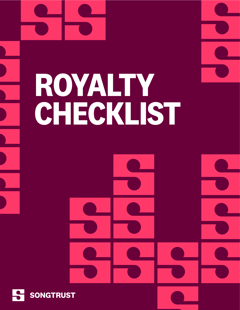If you’ve begun to explore the broad topic of how songwriters actually earn money writing music, you may have come across the term “sync.” One of the most potentially lucrative opportunities available to musicians, it’s when a song is synchronized to moving images, such as a film, television show, video game, or advertisement. Much like how a song’s various uses are linked to specific licenses and royalties, there are several different kinds of syncs.
Pretty self-explanatory, then; but what is a micro-sync? A micro-sync is a license for music used in tandem with visual works multiple times, such as the videos and Shorts found on YouTube and other video streaming sites.
By the time you finish this article, you should have a basic understanding of what micro-sync royalties are and how they are earned. If you’re interested in leveraging your power as a music creator, they’re an opportunity that shouldn’t be ignored.
Micro-Syncs: A Macro View
Whenever you hear music set to a moving image, a sync license must be secured from the appropriate rights holders. The terms of this license will usually include an upfront fee for the use of both the recording and the composition. Depending on the song’s popularity and the context in which it is being used, this can range from a nominal amount to hundreds of thousands of dollars.
While micro-syncs don’t always generate the same eye-popping payouts as standard syncs, they’re an increasingly important part of the music publishing landscape. YouTube, for one, features millions of videos that utilize music. Uploaders whose channels are eligible can earn substantial money from ad revenue on their videos.
Copyright and Micro-Sync
If a video contains music that the uploader does not own, they must get permission from the copyright holder to use it on YouTube. The only exception is if the video is for personal use and not shared online.
That said, it’s nearly impossible for publishers and labels to keep up with the many license requests they receive from major platforms like YouTube. Instead, YouTube signs agreements with publishers and labels that grant the platform the right to host their entire catalogs.
In exchange, rightsholders can monetize and collect royalties generated by the videos that use their music. They do this by using a blanket license to establish “per-use” fees for monetized use.
How To Collect Micro-Sync Royalties
Depending on where micro-syncs occur, they may generate both performance and mechanical royalties. When a monetized YouTube video is viewed in the US, it will generate performance and mechanical royalties.
Generally, performance royalties are tracked, collected, and paid through your affiliated collection society — a PRO like ASCAP or BMI in the U.S., or a CMO like GEMA in Germany or SACEM in France. The mechanical royalties you earn are tracked by organizations that administer mechanical licenses, such as Mechanical Rights Organizations (MROs) like The Mechanical Licensing Collective (The MLC) or the Harry Fox Agency (HFA) in the U.S. or CMOs in Europe. They are then paid out by your publisher or a publishing administrator like Songtrust.
That said, some publishers and publishing administrators, like Songtrust, have direct agreements with digital platforms to collect micro-sync royalties on behalf of songwriters. For certain territories and types of rights, platforms like YouTube, Meta, and TikTok pay Songtrust directly for royalties generated from micro-syncs. This streamlined collection process ensures songwriters receive the royalties they’ve earned from these platforms more efficiently.
While you can tackle the administration of these licenses using a third-party service, managing the micro-sync landscape is an intrinsic part of what we do here at Songtrust. It’s even in our service agreement. Whether or not you ultimately decide to partner with us, make sure you’re on top of this increasingly important part of the publishing landscape.
If you want to learn more about YouTube and micro-sync royalties, check out our YouTube Royalties Crash Course, or reach out to our team directly.






